Related Research Articles

Sir Thomas Wyatt was a 16th-century English politician, ambassador, and lyric poet credited with introducing the sonnet to English literature. He was born at Allington Castle near Maidstone in Kent, though the family was originally from Yorkshire. His family adopted the Lancastrian side in the Wars of the Roses. His mother was Anne Skinner, and his father Henry, who had earlier been imprisoned and tortured by Richard III, had been a Privy Councillor of Henry VII and remained a trusted adviser when Henry VIII ascended the throne in 1509.
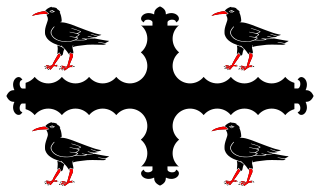
Flintshire, also known as the County of Flint, is one of Wales' thirteen historic counties, and a former administrative county. It mostly lies on the north-east coast of Wales.

Ivinghoe is a village and civil parish in east Buckinghamshire, England, close to the borders with Hertfordshire and Bedfordshire. It is 33 miles northwest of London, 4 mi (6 km) north of Tring and 6 mi (10 km) south of Leighton Buzzard, close to the village of Pitstone.

Ellesmere is a town in Shropshire, England, located near the Welsh border and the towns of Oswestry and Whitchurch, and the Welsh city of Wrexham. It is notable for its proximity to a number of prominent Meres.

Earl of Bridgewater was a title that has been created twice in the Peerage of England, once for the Daubeny family (1538) and once for the Egerton family (1617). From 1720 to 1803, the Earls of Bridgewater also held the title of Duke of Bridgewater. The 3rd Duke of Bridgewater is famously known as the "Canal Duke", for his creation of a series of canals in North West England.

Francis Egerton, 1st Earl of Ellesmere,, known as Lord Francis Leveson-Gower until 1833, was a British politician, writer, traveller and patron of the arts. Ellesmere Island, a major island in Nunavut, the Canadian Arctic, was named after him.

Holt is a medieval village and community in Wrexham County Borough, Wales. It is situated on the border with England and in the historic county of Denbighshire. Holt Castle was begun by Edward I shortly after the English invasion of Wales in 1277. Farndon lies just over the River Dee.
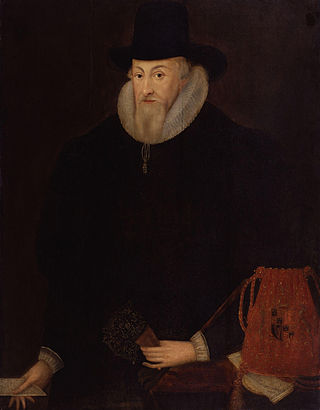
Thomas Egerton, 1st Viscount Brackley,, known as Lord Ellesmere from 1603 to 1616, was an English nobleman, judge and statesman from the Egerton family who served as Lord Keeper and Lord Chancellor for twenty-one years.

This is a list of Sheriffs of Cheshire.
Henry Norris was an English courtier who was Groom of the Stool in the privy chamber of King Henry VIII. While a close servant of the King, he also supported the faction in court led by Queen Anne Boleyn, and when Anne fell out of favour, he was among those accused of treason and adultery with her. He was found guilty and executed, together with the Queen's brother, George Boleyn, Sir Francis Weston, William Brereton and Mark Smeaton. Most historical authorities argue that the accusations were untrue and part of a plot to get rid of Anne.
William Brereton, c. 1487/1490 – 17 May 1536, was a member of a prominent Cheshire family who served as a courtier to Henry VIII. In May 1536, Brereton was accused of committing adultery with Anne Boleyn, the king's second wife, and executed for treason along with her brother George, Henry Norris, Francis Weston and a musician, Mark Smeaton. Many historians are now of the opinion that Anne Boleyn, Brereton and their co-accused were innocent.

Erbistock is a village and community in Wrexham County Borough, Wales. The village lies on the banks of the River Dee.
The Egerton, laterGrey Egerton, later stillEgerton baronetcy, of Egerton and Oulton in the county of Chester, is a title in the Baronetage of England held by the senior patrilineal branch of the Egerton family.

Borras is a hamlet in Wrexham County Borough, Wales to the north-east of the city of Wrexham. It is part of the community of Holt.
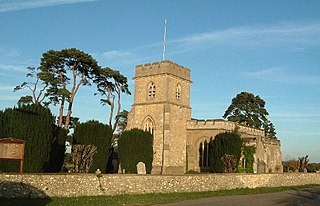
Little Gaddesden is a village and civil parish in the borough of Dacorum, Hertfordshire 3 miles (4.8 km) north of Berkhamsted. As well as Little Gaddesden village, the parish contains the settlements of Ashridge, Hudnall, and part of Ringshall. The total population at the 2011 Census was 1,125. Little Gaddesden is an area of outstanding natural beauty (AONB) and a conservation area protected by the National Trust.
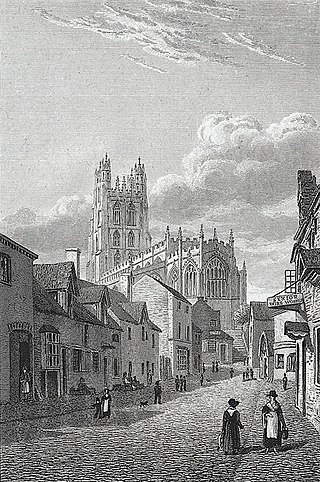
The city of Wrexham in north-east Wales has a history dating back to ancient times. The former market town was the site of heavy industry in the 19th and 20th centuries, and is now an active commercial centre. Wrexham was granted city status in 2022.

The first High Sheriff of Denbighshire was John Salusbury, snr, appointed in 1540. The shrievalty of Denbighshire, together with that of Flintshire, continued until 1974 when it was abolished after the county and shrievalty of Clwyd was created.
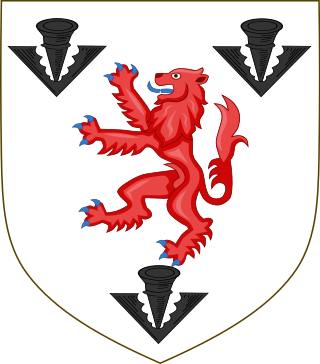
The Egerton family is a British aristocratic family. Over time, several members of the Egerton family were made Dukes, Earls, knights, baronets and peers. Hereditary titles held by the Egerton family include the dukedoms of Bridgewater (1720–1803) and Sutherland, as well as the earldoms of Bridgewater (1617–1829), Wilton (1801–1999) and Egerton (1897–1909). Several other members of the family have also risen to prominence. The Egerton family motto is Virtuti non armis fido.
The Rofft was a historic site at Marford in the Wrexham County Borough. It was initially a pre-historic camp, and later a motte and bailey castle. There are no visible remains of the site today.
The Lordship of Bromfield and Yale was formed in 1282 by the merger of the medieval commotes of Marford, Wrexham and Yale. It was part of the Welsh Marches and was within the cantref of Maelor in the former Kingdom of Powys.
References
- 1 2 3 4 5 6 7 8 9 10 11 12 13 14 Neobard., Palmer, Alfred (1987). A history of the old parish of Gresford in the counties of Denbigh and Flint. Wrexham: Bridge Books. ISBN 0950828564. OCLC 896058633.
- 1 2 3 4 Silvester, R.J.; Hankinson, R (2014). "Parks: Scheduling Enhancement Programme" (PDF). The Clwyd-Powys Archaeological Trust. Retrieved 8 May 2018.
- 1 2 3 Pratt, D (1992). "Fourteenth Century Marford and Hosley: A Maerdref in Transition". Transactions of the Denbighshire Historical Society. 41: 25–69.
- 1 2 Smith, S.G. (2012). "Medieval Parks, Gardens and Designed Landscapes of North Wales and the Shropshire Marches". Welsh Historical Gardens. 63: 4–6.
- 1 2 3 4 5 Gairdner, James, ed. (1888). Henry VIII: August 1536, 21–36. Letters and Papers, Foreign and Domestic, Henry VIII, July–December 1536. Her Majesty's Stationery Office.
